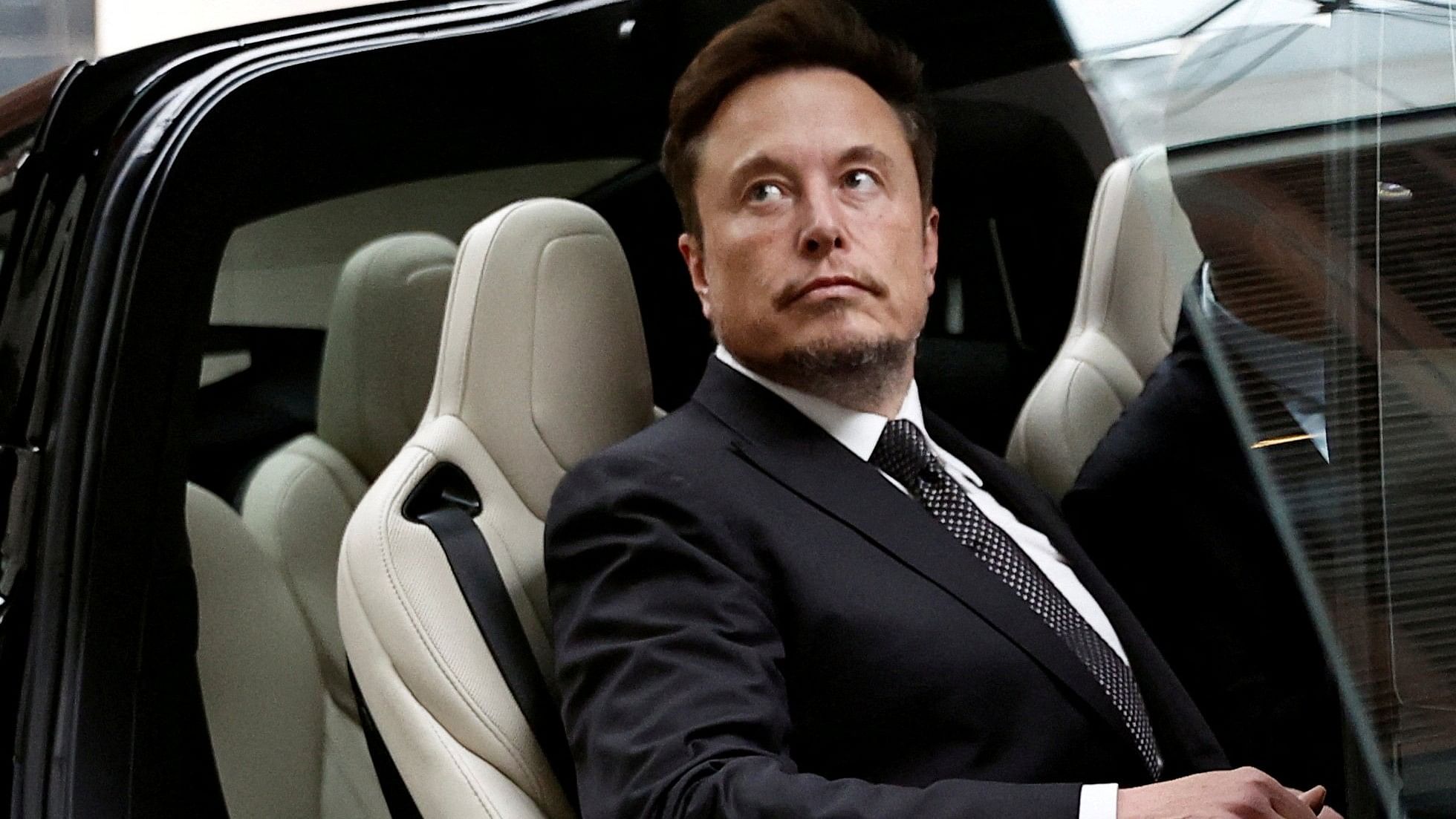
Tesla Chief Executive Officer Elon Musk gets in a Tesla car.
Credit: Reuters Photo
By Liam Denning
In case you didn’t know that Tesla Inc. is on the cusp of a new wave of growth, it is now slashing its workforce by more than one-in-ten. It’s all there in the memo.
Chief Executive Elon Musk informed the ranks this weekend that more than 14,000 of them — based on year-end 2023 figures — would be leaving the electric vehicle manufacturer forthwith. The announcement is one part regret, three parts optimism. The phrase “next phase of growth” appears up top and in the kicker, with a derivative of it somewhere in the middle, too. This is all quite normal corporate stuff: Companies doing big layoffs must emphasize the leaner, fitter organism that will emerge. But this is Tesla at an interesting moment in its development, so the context matters.
The past year has witnessed a sequence of events concerning Tesla that mark it out as a car company. It has built too many vehicles relative to demand. It has slashed prices to shift them, with decidedly mixed results. Margins have been squeezed as a result. It has launched a flashy new model to reinject some vigor, with less-than-certain success. And it has done its best to reposition itself in the minds of investors as an artificial intelligence company.
OK, that last bit isn’t very car company-like. It is Tesla-like. After the debacle of quarterly sales figures earlier this month that missed by a mile and then the bizarre drama of a Reuters report that Tesla had ditched plans for a low-cost model — denied, sort of — Musk announced a forthcoming robotaxi reveal. Whatever ends up getting unveiled in August, the sense of Tesla seeking to reframe the story around expansive visions of AI, rather than the current reality of shrinking volumes of vehicles, is palpable.
Indeed, the same weekend Tesla informed employees of the layoffs, it slashed the monthly subscription fee on its full-self driving driver assistance package in half. As with boxes on four wheels, the future does not sell itself, it seems. While the new price of $99 per month may tempt more drivers to sign up for FSD that way, it is also likely to take away from those who buy the package upfront, which is $12,000 currently, adding a further headwind to profit margins, at least in the near term.
Credit: Bloomberg Photo
The layoffs will offer some shield, but it is tough to quantify the benefits. As of 2022, Tesla’s global median employee compensation was about $34,000. Assuming a 10 per cent increase since then — inflation’s been sticky — and 14,500 layoffs, that’s about $550 million before severance costs and taxes. Based on the current consensus forecast, that’s maybe 4-5 per cent of 2024 earnings. Of course, these are guesstimates, but this feels more like saving pennies than something transformational for the finances — and the stock.
For that, Tesla needs a new low-cost model to revamp its lineup and expand the market. Or a truly functional robotaxi. The former looks at least a year or two off. And the sudden departure of one of Tesla’s few named company officers, Andrew Baglino, senior engineer of energy and powertrain, suggests even that timeline may be optimistic. The latter looks, as ever, vastly oversold as a concept.
Tesla’s layoffs add to the narrative of being a car company dealing with a slowdown. Yet its stock remains priced at about 55 times forward earnings — roughly where it was at the start of the month before those sales figures blew a hole through forecasts (or should have). Investors don’t seem to have gotten the memo quite just yet. Results come out next week.